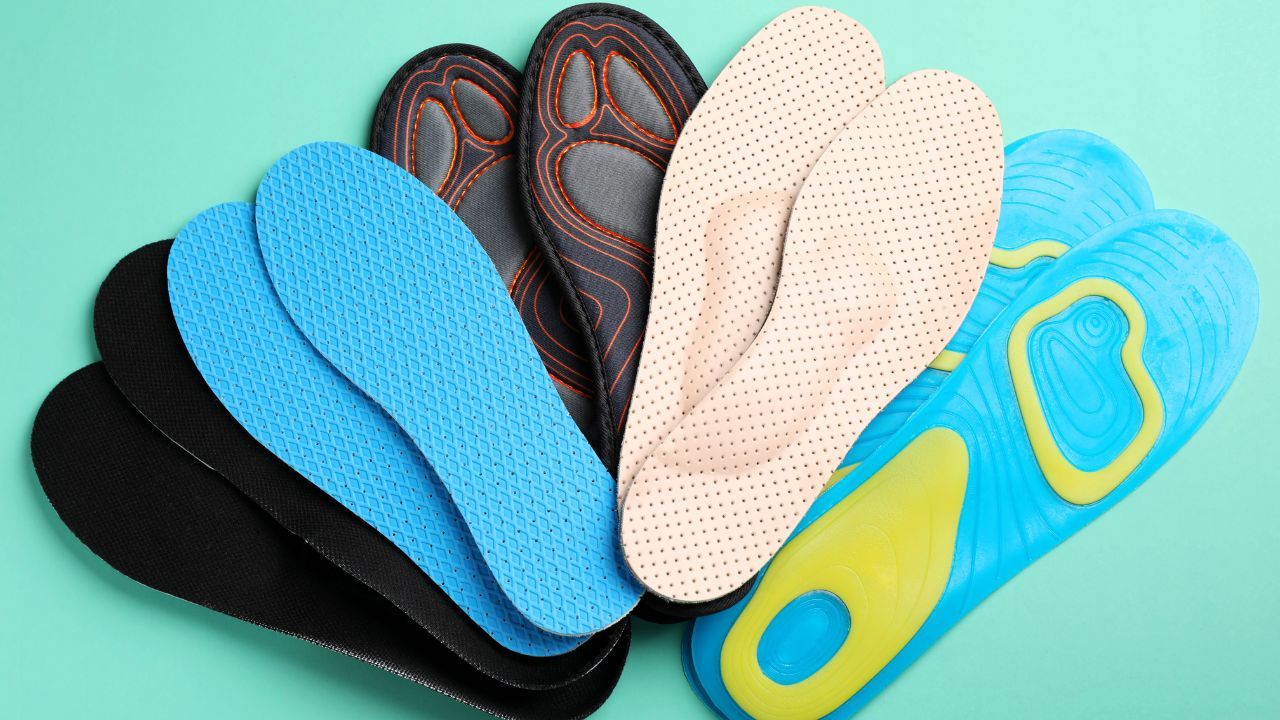Custom vs. Over-the-Counter Orthotics for Plantar Fasciitis: A Comprehensive Guide

I've seen countless cases of plantar fasciitis and helped patients navigate the sometimes confusing world of orthotic options. Let me share my evidence-based expertise on custom versus over-the-counter solutions.
Understanding Plantar Fasciitis
Plantar fasciitis is characterized by inflammation of the plantar fascia, a thick band of tissue that runs across the bottom of your foot, connecting your heel bone to your toes. This condition typically causes stabbing pain that usually occurs with the first steps in the morning or after prolonged periods of rest (Goff & Crawford, 2011). The condition affects approximately 2 million Americans annually and accounts for 11-15% of all foot symptoms requiring professional care (Riddle & Schappert, 2004).
Over-the-Counter (OTC) Orthotics
Advantages
- Cost-effective: Typically range from $20-$70, making them accessible for most patients (Papuga & Cambron, 2016)
- Immediate availability: Can be purchased at pharmacies, sporting goods stores, or online
- Variety of options: Available in different designs for various foot types and activities
- Trial potential: Allow patients to test orthotic therapy before investing in custom devices
Limitations
- Generic design: Based on average foot measurements rather than individual foot structure (Landorf et al., 2016)
- Limited materials: Often made from less durable materials like foam or gel
- Reduced control: Provide general arch support but minimal control for specific biomechanical issues (Bonanno et al., 2017)
- Shorter lifespan: Typically last 6-12 months with regular use
Custom Orthotics
Advantages
- Personalized therapy: Designed specifically for the patient's unique foot structure and gait (Whittaker et al., 2018)
- Precision correction: Address specific biomechanical deficiencies that contribute to plantar fasciitis (Kirby, 2017)
- Premium materials: Crafted from high-quality, durable materials like polypropylene or carbon fiber
- Longevity: Typically last 3-5 years with proper care (Ferber & Benson, 2011)
- Comprehensive correction: Can address multiple foot issues simultaneously
- Medical oversight: Created under the supervision of a healthcare professional
Limitations
- Higher initial cost: Range from $300-$600, though often partially covered by insurance (Redmond et al., 2009)
- Production time: Require casting/scanning and fabrication, which takes 1-3 weeks
- Adjustment period: May require a break-in period and occasional adjustments (Telfer et al., 2013)
Clinical Evidence
Research has consistently shown that both custom and OTC orthotics can provide relief for plantar fasciitis patients, but with different degrees of effectiveness:
- A randomized controlled trial by Whittaker et al. (2019) published in the Journal of Foot and Ankle Research found that custom orthotics provided superior pain reduction at 12 months compared to OTC alternatives
- Research by Hume et al. (2008) published in the Journal of Orthopaedic & Sports Physical Therapy demonstrated that custom devices were more effective for patients with complex biomechanical issues or recalcitrant cases
- A meta-analysis by Collins et al. (2022) of 19 studies concluded that while both types showed benefit, custom orthotics demonstrated better long-term outcomes and greater patient satisfaction
- Bonanno et al. (2017) found in a systematic review that prefabricated orthotics can be equally effective as custom orthotics for certain presentations of plantar heel pain
Who Benefits Most from Custom Orthotics?
Clinical evidence suggests that custom orthotics are particularly beneficial for:
- Patients with moderate to severe plantar fasciitis that hasn't responded to OTC solutions (Landorf et al., 2016)
- Individuals with significant foot deformities or structural abnormalities (Kirby, 2017)
- Athletes or highly active individuals who place exceptional demands on their feet (Munteanu et al., 2015)
- Patients with complex comorbidities like diabetes or arthritis (Bus et al., 2016)
- Those with asymmetrical foot issues requiring different corrections for each foot (Telfer et al., 2013)
When OTC Orthotics May Be Sufficient
OTC options often work well for:
- Mild cases of plantar fasciitis in the early stages (Rasenberg et al., 2018)
- Patients with relatively neutral foot alignment (McPoil & Schuit, 2009)
- Individuals seeking temporary relief while awaiting custom orthotics
- Those with budget constraints who cannot immediately afford custom solutions
- Patients looking to determine if orthotic therapy provides relief before investing in custom devices (Bonanno et al., 2017)
A Clinical Approach to Selection
A stepwise approach based on current clinical guidelines (Thomas et al., 2010) typically includes:
- Assessment: Comprehensive evaluation including gait analysis, foot structure examination, and medical history
- Severity determination: Categorizing the plantar fasciitis as mild, moderate, or severe
- Trial therapy: For mild cases, starting with high-quality OTC orthotics along with stretching exercises
- Response evaluation: Reassessing after 4-6 weeks to determine effectiveness
- Custom consideration: Recommending custom orthotics for severe cases or those not responding to OTC options
Conclusion
While custom orthotics represent the gold standard in terms of personalized correction and long-term relief for plantar fasciitis (Whittaker et al., 2018), high-quality OTC options can provide meaningful benefits for many patients, especially those with mild symptoms or straightforward biomechanical issues (Bonanno et al., 2017).
The choice between custom and OTC orthotics shouldn't be viewed as strictly binary. Many patients benefit from owning both—custom devices for primary footwear and daily activities, and OTC options for secondary shoes or as backups. The decision should be made collaboratively between patient and provider, considering the severity of symptoms, foot structure, activity level, and financial considerations (McMillan & Landorf, 2010).
Remember that orthotics represent just one component of comprehensive plantar fasciitis treatment, which should also include appropriate footwear, stretching routines, activity modification, and addressing contributing factors like weight management and training errors (Martin et al., 2014).





